Why Emma Chamberlain Deleted TikTok
Emma Chamberlain, a celebrated internet personality, recently revealed why she stepped away from TikTok, a platform where her popularity soared. Her decision wasn’t about trends or shifting interests but centered on prioritizing her mental health. Like many of us, Emma admitted that being “chronically online” took a toll on her well-being, explaining, “My headspace can go south fast if I’m on it too much.”
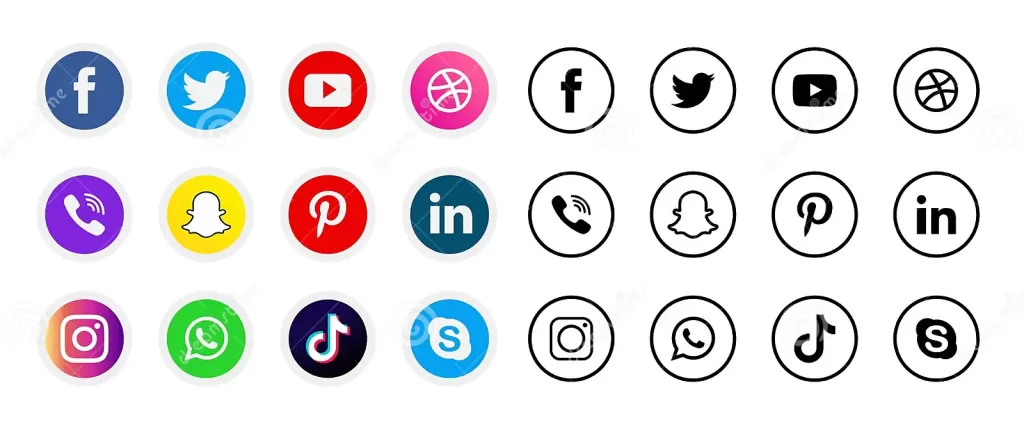
The Impact of Social Media on Mental Health
Emma shared how endless scrolling eroded her sense of self. Social media often highlights curated perfection, leading many users, including Emma, to experience self-doubt. The pressures of constant connectivity and comparison were too much. She prioritized self-care over maintaining an online presence, teaching fans that boundaries are essential in the digital age.
Discover High-End Health and Fitness Equipment for Optimal Performance Premium health and fitness products. In today’s health-conscious world, investing in high-quality fitness products can greatly enhance your wellness journey.
Practical Steps to Reduce Social Media Usage Without Quitting Entirely
In the digital age, it’s easy to spend hours on social media without a second thought. However, you can take practical steps to cut back on your usage, while still staying connected.
Monitor Your Emotions
Keep a daily journal of your emotions before and after using social media. Rate how you feel on a scale from 0 to 10, with 10 representing the strongest emotion. Doing this consistently for a week can reveal how your mood fluctuates with social media interactions.
Set Defined Time Limits
Use built-in app timers or third-party apps to restrict the amount of time you spend on social media platforms. This helps prevent endless scrolling and encourages you to be more intentional about when you log in.
Explore Alternative Activities
Identify hobbies or activities you enjoy and potentially replace some social media time with these activities. Whether it’s reading a book, going for a walk, or trying out a new recipe, integrating diverse activities can enrich your daily routine.
Schedule Social Media Breaks
Designate specific times of the day for checking social media. By confining your usage to these times, you can create structure and reduce impulsive checking.
Curate Your Feed
Be deliberate about who and what you follow. Streamlining your feed to include only content that brings you joy or inspiration can make your time on social media more positive and purposeful.
By adopting these strategies, you can enjoy a balanced approach to social media, harnessing its benefits without letting it consume too much of your time.
How Self-Monitoring Social Media Use Can Transform Perceptions and Boost Mental Health
Many people struggle with the adverse effects of excessive social media use, but the solution might be simpler than a complete digital detox. Instead of quitting cold turkey, self-monitoring your usage can be a game-changer.
Discovering Personal Limits
First, it’s crucial to understand your own boundaries. By observing and evaluating your social media habits, you can identify how they affect your emotional well-being. This awareness allows you to make informed decisions about your engagement levels.
Conducting Personal Experiments
One practical strategy is to rate your emotions on a scale of 0-10 before and after using social media at a consistent time each day for a week. This personal experiment can reveal if your mood shifts negatively, suggesting it might be time to reassess how you engage with these platforms.
Benefits of Limiting Use
Research, such as a 2018 study from a renowned university, underscores the effectiveness of this method. In the study, participants who reduced their time on platforms to just ten minutes per day experienced noteworthy declines in feelings of loneliness and depression compared to those who continued their regular usage.
Beyond Monitoring: Taking Action
If self-monitoring shows a negative impact, consider altering how you spend time online. Perhaps reduce the duration or switch to alternative activities that bring joy, ultimately fostering a healthier relationship with technology.
Highlights:
- Track Emotional Impact: Rate emotions consistently to identify trends.
- Set Time Limits: Experiment with daily restrictions to gauge effects.
- Choose Alternatives: Opt for activities that enhance happiness outside the digital realm.
By tuning into the effects social media has on your emotions, and making adjustments accordingly, you pave the way for improved mental health and a more positive online experience.
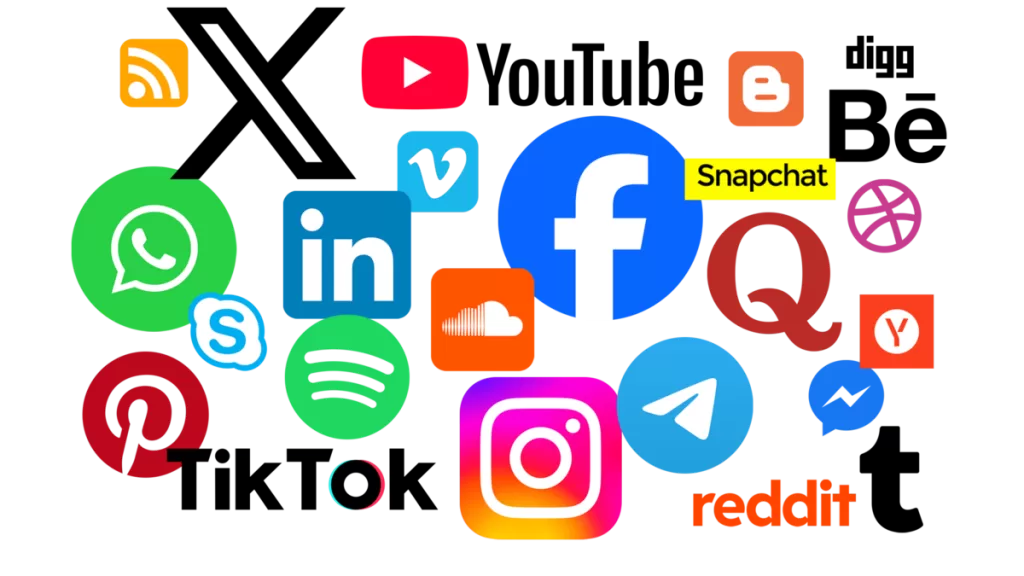
How Can Adults and Teens Use Social Media Healthily?
Navigating the world of social media doesn’t have to be fraught with stress. While quitting cold turkey isn’t necessary for most, understanding and managing your online behavior can lead to a healthier relationship with these platforms. Here are some actionable tips to help maintain that balance:
1. Conduct Personal Experiments
Try to measure your emotional responses to social media use. Rate your feelings on a scale of 0 to 10 before and after your sessions. Do this consistently at the same time each day for a week. Tracking your mood can reveal patterns in how social media affects you emotionally.
2. Set Time Boundaries
Determine how much time you want to spend online. Setting limits, like a daily or weekly allowance, can prevent mindless scrolling. Use screen time management tools available on many devices to stick to your goals.
3. Balance Activities
Swap some online time with offline pursuits that bring you joy. Whether it’s reading, exercising, or spending time with loved ones, diversifying your activities can improve overall well-being.
4. Be Mindful of Content
Curate your feeds to include positive, inspiring, and educational content. Unfollow accounts that consistently trigger negative emotions. Remember, your social media space should be a reflection of your interests and values.
By actively monitoring and adjusting your social media habits, you can foster a more positive digital environment for both yourself and those around you.
How to Manage the Negative Effects of Social Media
While it’s difficult to avoid social media entirely, finding ways to protect your mental well-being from its adverse effects is crucial. Here are some practical strategies to help you distance yourself from negativity while still staying connected:
1. Limit Your Screen Time
Set boundaries on how much time you spend on different platforms. Use apps like Forest or StayFocusd to help you track and manage the hours you dedicate to scrolling. By having specific times for your digital activities, you can ensure you have ample time for more fulfilling offline experiences.
2. Identify Your Triggers
Spend time recognizing what triggers negative emotions while you’re online. Keep a journal to note any patterns or specific interactions that lead to anxiety or jealousy. Understanding these triggers allows you to adjust your habits or curate your feed to mitigate them effectively.
3. Engage in Offline Activities
Explore hobbies and activities that bring you joy outside the digital world. Whether it’s picking up a good book, going for a walk in nature, or practicing yoga, engaging in these activities can offer a healthy distraction and shift your focus away from the pressure of online comparisons.
4. Practice Mindfulness
Incorporate mindfulness and meditation into your daily routine to help center your thoughts and emotions. Apps like Headspace or Calm can guide you through exercises that promote mental clarity and reduce stress levels. Being present can make you less inclined to dwell on the portrayal of others’ lives online.
5. Establish Ground Rules
Set specific rules for yourself when using social media. For instance, you might decide to unfollow accounts that consistently make you feel inadequate or to step away from platforms during certain hours, such as the early morning or late at night, to maintain peace of mind.
6. Conduct Emotion Check-ins
Before and after you go online, evaluate your emotional state with a personal scale. Rate your mood on a scale from 0-10, where 10 is the most intense. If you notice a trend of feeling less satisfied post-usage, consider cutting back time spent on platforms and redirecting that energy into something more positive.
By thoughtfully navigating your social media interactions and prioritizing your mental health, you can create a balanced digital presence that enhances your life rather than detracts from it.
Suppressing likes on social media platforms can impact mental health by reducing the pressure to achieve social validation. Without the constant numerical feedback, users may feel less compelled to measure their worth based on the popularity of their posts. This can lead to a healthier online experience where the focus shifts from seeking approval to sharing meaningful content.
However, the absence of likes doesn’t completely eliminate the possibility of comparisons. Users can still gauge their popularity through the number of followers, comments, or shares, potentially maintaining some level of competition. Discussions continue in comment sections, providing another area for comparison and feedback, albeit in a different form.
Key Impacts:
- Reduced Social Pressure: The lack of visible likes shifts the focus from quantifiable popularity to personal satisfaction.
- Continued Comparisons: Members of these platforms might still find other metrics to compare themselves, like comments or follower count.
- Emphasis on Content Quality: Users might focus more on content value and creativity rather than aiming for likes.
In summary, while suppressing likes alters the dynamics of social competition, it doesn’t completely eradicate the comparison culture. The overall impact on mental health can vary, depending on how individuals interact with the remaining metrics and community responses.
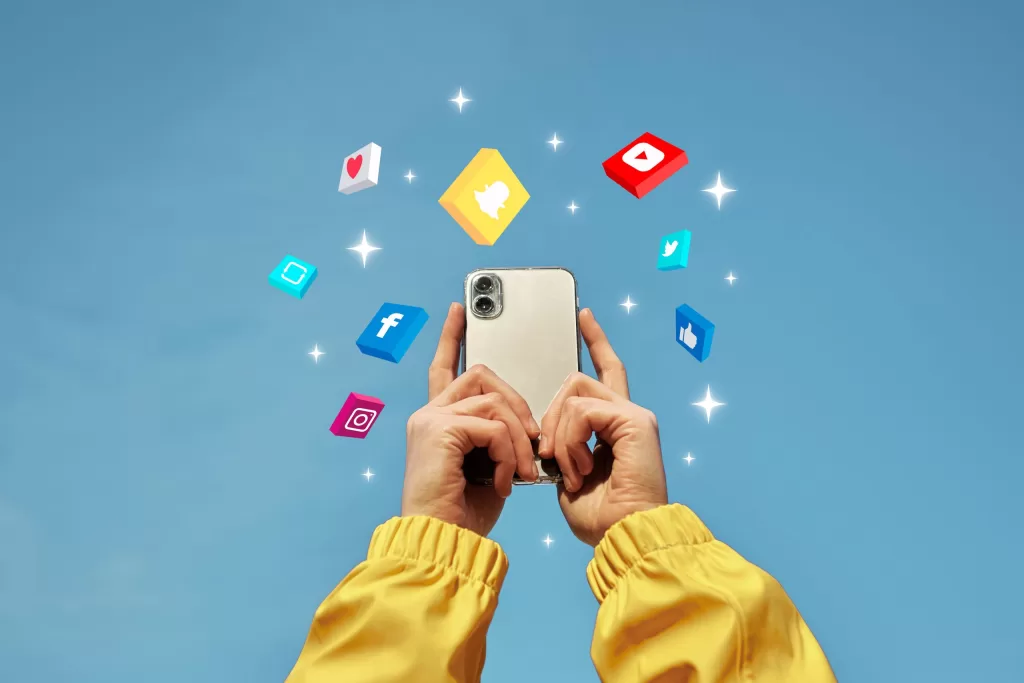
Why Teens, Especially Females, Are More Vulnerable to the Negative Impacts of Social Media
When teens dive into social media, they open doors to both connection and challenges, especially affecting mental health. Girls, in particular, face unique risks due to the nature of relational dynamics online.
Social Dynamics and Emotional Impact
Boys might display aggression physically, but girls often channel theirs through social interactions. Platforms like Instagram and TikTok magnify these dynamics, offering avenues for exclusion and hurtful exchanges. Imagine a young teen discovering through posts that her best friend has found a new favorite companion. Unlike the past, when she might have remained unaware, these updates are just a tap away, amplifying feelings of exclusion.
Unrealistic Standards and Body Image
Social media also creates a stage where appearances and reality blur. Teens, whose bodies are undergoing rapid changes, are frequently bombarded with curated, filtered images that distort perceptions of reality. Gone are the days when altered images were confined to glossy magazines. Now, every scroll delivers seemingly flawless photos not just of celebrities, but of peers, thanks to easy-to-use apps offering airbrushing and other enhancements.
Developmental Vulnerabilities
Middle school is a particularly tricky period. As teens navigate puberty and seek to understand their identities, their brain’s impulse control is still under construction. This makes them especially prone to impulsive decisions—like posting or commenting without a second thought. Relationships with peers hold significant sway, and social media can exacerbate these tensions, offering no pause before broadcasting feelings or interactions.
In sum, the intersection of developmental changes, the importance of peer acceptance, and the influential nature of social media leaves teens, particularly young females, in a vulnerable position. Recognizing this can help guide better support and healthier engagement strategies.
People are drawn back to social media repeatedly, even with its downsides, due to the unpredictable nature of online interactions. This unpredictability mirrors the allure of slot machines. If players always knew the outcome, they’d likely walk away, but the possibility of a win keeps them playing.
Users don’t know how many likes their post might receive
Similarly, on social media, users don’t know how many likes their post might receive, who will react, or when those reactions will occur. This element of surprise creates a cycle of anticipation and reward. The potential for positive reinforcement, such as receiving likes and comments, taps into our innate desire for social validation and connectivity.
The randomness of these interactions makes them addictive. People are often willing to overlook the negative aspects, such as time consumption and emotional impact, for the chance of a gratifying experience. In essence, the hope of achieving a rewarding outcome keeps people engaged, perpetuating their return to these platforms.
FOMO, or the fear of missing out, significantly influences how people engage with social media. When everyone around is active on these platforms, there’s a compelling urge to participate to avoid feeling left out. This anxiety about missing out on shared jokes, connections, or social events can drive individuals to frequently check their feeds.
Seeing friends or acquaintances involved in activities without them can lead to emotional distress, resulting in feelings of anxiety or depression. Such emotional reactions may even manifest in physical symptoms, underscoring the powerful impact FOMO can have on one’s mental and physical well-being.
Recognize the Signs of Screen Fatigue and Digital Burnout
In today’s digital age, it’s easy to lose track of time while glued to our screens. Discovering whether you’re experiencing screen fatigue or digital burnout requires being attentive to a few key indicators.
Physical Symptoms
- Eye Strain: If your eyes feel tired or dry, or you experience blurred vision, these are common signs.
- Headaches and Migraines: Frequent headaches might be a clue that you’re overdoing screen time.
Emotional and Mental Indicators
- Increased Irritability: Feeling easily annoyed after prolonged screen exposure.
- Depression and Anxiety: Heightened feelings of anxiety or sadness can suggest burnout.
Behavioral Changes
- Decreased Productivity: Struggling to focus and get tasks done efficiently.
- Sleep Disruptions: Finding it difficult to fall asleep due to late-night screen use.
Social Signs
- Withdrawal from Offline Activities: Preferring online interactions over real-life engagements.
- Neglecting Relationships: Noticing a decline in time spent with family or friends.
By keeping an eye on these signs, you can better manage your screen time and prevent digital burnout from taking center stage in your life. Remember, balance is key.
How Does Social Media Use Affect Sleep and Physical Health?
The impact of social media on our well-being is significant, as highlighted by a British study in 2018. This research linked the use of social media to various sleep issues, including reduced sleep quality, disruptions, and delayed sleep schedules. Poor sleep patterns are closely associated with mental health challenges such as depression and cognitive impairments like memory loss, which can negatively influence academic and professional performance.
Beyond sleep, social media usage can have a direct impact on physical health. Scientific findings suggest a strong connection between our mental state and physical body. For instance, feelings of anxiety and depression, often exacerbated by social media pressures, can manifest as physical symptoms. These symptoms might include nausea, headaches, muscle tension, and even tremors, demonstrating how intertwined our mental and physical health truly are.
Therefore, it’s essential to be mindful of social media consumption to safeguard both sleep quality and physical health.
Social media taps into the brain’s reward system by releasing dopamine, a neurotransmitter associated with feelings of pleasure and satisfaction. This chemical reaction is similar to what occurs during enjoyable activities like eating delicious food, engaging in physical intimacy, or spending time with friends. Each like, share, or comment acts as a trigger, prompting a dopamine boost and creating a cycle of seeking more engagement.
The platforms are engineered to keep users engaged for extended periods. This continuous engagement can foster habits that are both gratifying and hard to break. While this might sound appealing, it’s important to recognize that this reinforcement loop can lead to increased feelings of anxiety and depression, as well as even some physical issues over time.
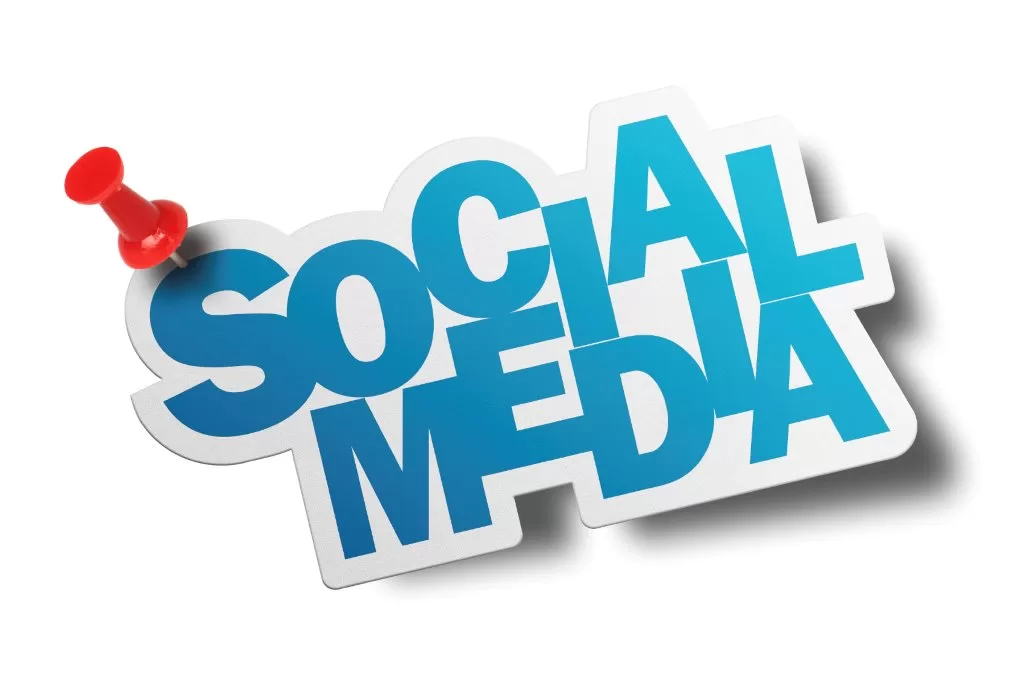
How Social Media Affects Family Dynamics and Communication
Time Management and Digital Boundaries
Families can benefit from setting clear boundaries on device usage. Allocating specific times for gadgets helps instill responsible media habits and ensures everyone gets a good night’s rest. When teenagers start engaging with social platforms, parents can consider implementing a nightly device collection. This not only allows parents to keep abreast of their teen’s online activities but also reminds younger users that their digital footprint is lasting. If something is too sensitive for family eyes, it might be wise to reconsider posting it.
Lead by Example
Parents’ digital habits strongly influence their children. If the goal is to maintain a phone-free dining table, parents should model this behavior themselves. Demonstrating the importance of personal interactions over digital distractions can encourage similar behaviors in children.
Communication Struggles and Alternatives
Restrictions on device usage, like no late-night phone interactions, can initially seem isolating for teens. However, these rules present an opportunity to explore other communication methods. Teens can encourage friends to share plans in person, or use a landline or a parent’s phone to stay connected. This can enhance personal interaction and accountability.
Impact of Distracted Parenting
Research highlights how parental use of mobile devices can lead to distracted parenting. This often results in children vying for attention and can cause friction with other caregivers. When parents are glued to their screens, it can foster a sense of neglect, prompting children to seek attention in less favorable ways. Balancing device use not only strengthens family bonds but also fosters more profound and meaningful connections.
In conclusion, while social media and technology have their place, mindful usage is critical in preserving healthy family dynamics and enhancing communication. By setting boundaries, modeling desired behaviors, and prioritizing face-to-face interactions, families can mitigate the potential downsides of digital life.
Consequences of Parents’ Mobile Device Use on Interactions with Children
When parents frequently use mobile devices, they inadvertently set a precedent for their children regarding what is acceptable behavior. For instance, if parents consistently check their phones during family meals, children might perceive this as normal and acceptable. This could lead to greater challenges when trying to encourage device-free quality time, such as asking children to put their phones down at dinner.
Impact on Parent-Child Interaction
- Distracted Attention: Parents often find themselves caught in the pull of their screens, leading to moments where they are less attentive to their children. This divided attention can hinder meaningful interactions, making children feel less prioritized.
- Increased Demand for Attention: Children, naturally seeking their parents’ attention, may exhibit more attempts to gain notice when parents are preoccupied with their devices. This can sometimes manifest as acting out, simply as a way to reclaim the presence of an otherwise distracted parent.
- Parental Conflicts: The use of mobile devices often leads to conflict not only with children but also between caregivers. For example, disagreements may arise over the appropriate time and place for device use, potentially creating tension in family dynamics.
In summary, while mobile devices keep parents connected and informed, mindful moderation is crucial to maintain strong, meaningful connections with children and foster a harmonious home environment.
How Parents Can Model Healthy Social Media Habits for Their Children
In today’s digital age, setting a good example for healthy social media use is crucial for parents. Here are strategies that can help in guiding children towards responsible online behavior:
- Create a Family Media Plan: Establish boundaries for how much time each family member should spend on devices. This encourages not only balanced media consumption but also reinforces good habits like proper sleep hygiene.
- Implement Device-Free Nights: Encourage teens to turn in their phones at night. This allows parents the opportunity to review any online activities, fostering an environment where children understand that what they share online is permanent and should be shared responsibly.
- Modify Social Media Usage: Consider setting rules such as a “no selfie” policy or allow posting only about tangible objects and experiences rather than focused on appearance. This can help kids appreciate sharing experiences over aesthetics.
- Address Online Restrictions: It’s common for children to feel they’re missing out due to restrictions, such as limited platform access or curfews on device usage. Open communication about these restrictions is key.
- Lead by Example: Your own social media and device habits can significantly influence your child’s behavior. Demonstrating a balanced approach—like putting down devices during dinner—can set a powerful precedent for what’s expected within the family.
By actively engaging in these practices, parents not only aid their children in navigating the complexities of social media but also contribute to developing lifelong skills in managing digital content responsibly.
Emma’s Skincare Journey: From Acne to Radiance
Emma also opened up about her past struggles with acne. “Acne was my main skin concern,” she admitted, describing how all-consuming it became at its worst. Her journey toward clearer skin involved refining her routine and focusing on hydration and exfoliation.
A pivotal product in her skincare regimen is the Lancôme Clarifique Serum, which she uses for its exfoliating and brightening properties. Coupled with a balanced routine, this approach helps her maintain her glowing complexion today.

Unlock Clear Skin: How Probiotics Can Transform Your Acne Treatment
The Probiotic Revolution in Acne Care Acne is more than just a surface problem—it often stems from an imbalance in your skin’s microbiome. Enter probiotics: beneficial bacteria that can restore harmony to your skin and gut, targeting acne at its root cause. In this guide, we’ll explore how probiotics for acne treatment can be a…
Defining Emma’s Effortless Style
Her “Accidentally Trendy” Haircut
Emma’s effortlessly cool haircut has been dubbed “accidentally trendy” by fans. The style encapsulates her laid-back yet chic persona, effortlessly combining function and fashion.
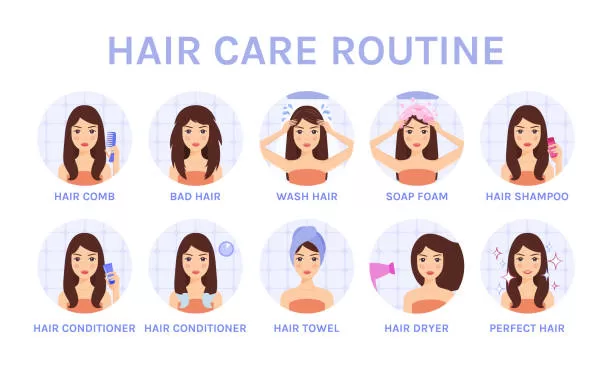
Create a Hair Care Routine That Suits You
How to Create a Hair Care Routine That Works for You A customized hair care routine is essential for maintaining healthy, vibrant hair. Knowing your hair type, understanding its needs, and selecting the right products can make a huge difference. Whether your hair is curly, straight, fine, or thick, there are specific steps you can…
Emma Chamberlain TikTok
Her Signature French-Girl Makeup
Emma’s makeup routine reflects a Parisian vibe: minimal, fresh, and radiant. Her approach emphasizes natural beauty, with a focus on hydrated skin, soft blush, and a touch of mascara.
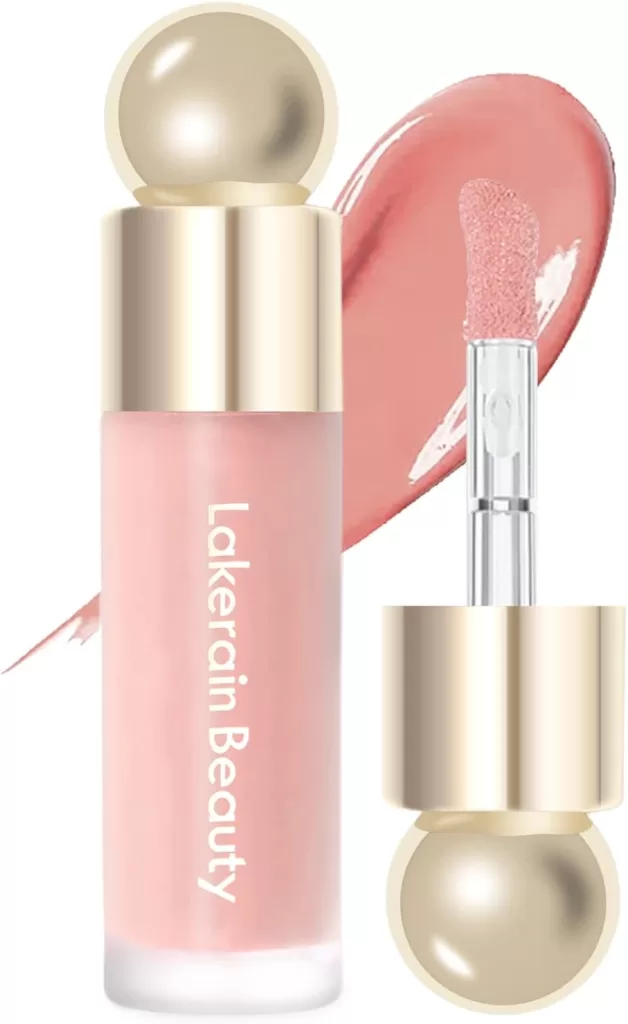
Erinde Soft Pinch Dewy Liquid Cream Blush, Soft Velvet Silk Texture, Long-lasing, Buildable and Blendable, Moisturizing Face Blush Stick for Cheek 01#
Emma Chamberlain TikTok: Red Nails and Minimalism
Emma’s vibrant red nails are a nod to her bold yet refined aesthetic. While her style is casual and approachable, small details like this bring a polished edge to her overall look.
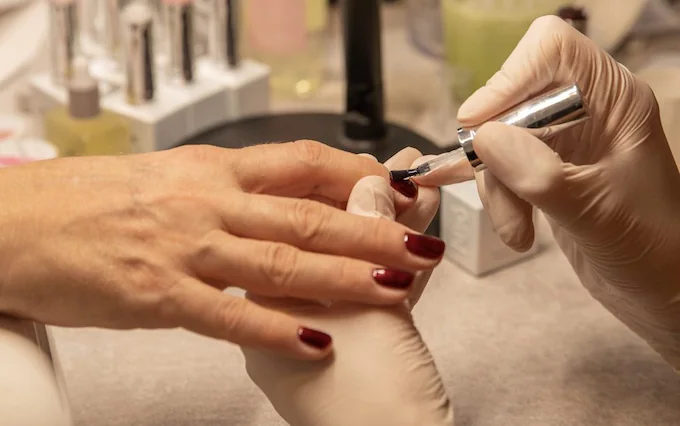
Top Products for Stronger Nails: A Guide to Healthier, More Resilient Nails
Top Products for Stronger Nails: Nourish and Strengthen Maintaining healthy, strong nails is essential for both aesthetic and practical reasons. Nails that are brittle or prone to breakage can be a result of various factors such as environmental damage, lack of proper care, or nutritional deficiencies. If you’re looking to strengthen your nails and keep…
Lessons from Emma Chamberlain’s Choices
Emma’s decision to leave TikTok resonates with her audience, highlighting the importance of self-awareness in managing mental health. Her transparency about the pressures of social media, coupled with her focus on self-care, skincare, and personal style, reminds fans to embrace authenticity in both their digital and real lives.

Unlocking the Secrets to Radiant Beauty: Skincare and Self-Care Essentials
Unlocking Radiant Beauty: Skincare and Self-Care Radiant Skin Secrets: Your Skincare & Self-Care Guide The Confidence Canvas: The Power of Makeup A flawless makeup application can work wonders, not just on our outward appearance, but on our inner confidence as well. It’s like painting a masterpiece on a canvas, each stroke enhancing our natural features…
FAQs Emma Chamberlain TikTok
Q1: Why did Emma Chamberlain delete TikTok?
A1: Emma deleted TikTok due to its negative impact on her mental health, saying, “My headspace can go south fast if I’m on it too much.”
Q2: What’s Emma Chamberlain’s skincare routine?
A2: Emma focuses on hydration, chemical exfoliation, and uses products like the Lancôme Clarifique Serum to maintain her glowing skin.
Q3: How does Emma Chamberlain stay stylish?
A3: Emma’s style features her trendy haircut, French-girl-inspired makeup, and bold red nails, emphasizing minimalism with a chic twist.
Q4: What can fans learn from Emma Chamberlain?
A4: Fans can learn to prioritize mental health, embrace authenticity, and adopt simple yet effective self-care routines.
Where to Buy Innovative Beauty Devices
Beauty devices are available at a range of online retailers, including Amazon and Sephora. Popular brands like Foreo, NuFACE, and ZIIP offer top-rated beauty tools designed to improve skin health and radiance.

Explore more articles like this @ Where And How Resources
If you found this article helpful, don’t forget to share it with your friends and followers!


